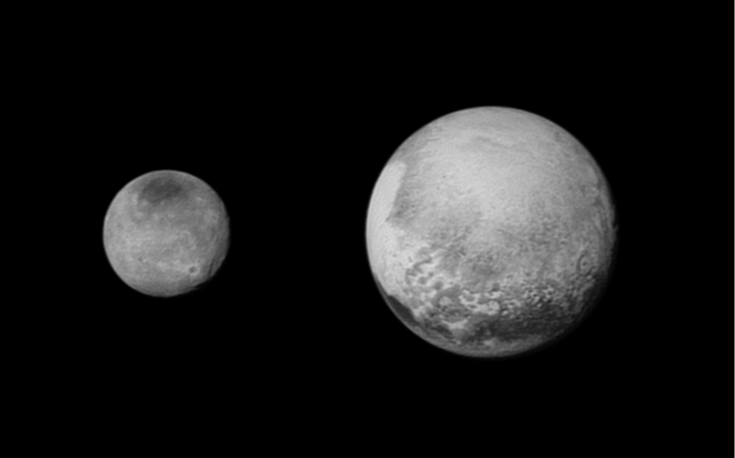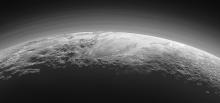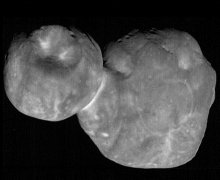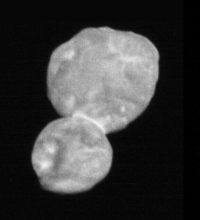You are here
Pluto
Because it is so far from the Sun, astronomers had a hard time measuring Pluto's size. They finally got it right in the 1980s, after James Christy discovered a companion object. By watching Pluto and the companion, named Charon, eclipse each other, they measured Pluto's diameter at about 1,400 miles -- about one-third less than the diameter of Earth's Moon.
Pluto is basically a ball of frozen nitrogen, methane, and carbon dioxide wrapped around a small core of rock. On average, it's farther from the Sun than any other of the major planets, so its surface is bitterly cold.
When it passes closest to the Sun, as it last did in 1989, some of its surface ice vaporizes, giving Pluto a thin, cold atmosphere of nitrogen and methane. As the planet retreats from the Sun, though, the atmosphere should freeze and fall to the surface as fresh ice.
The atmosphere vaporizes and refreezes because Pluto follows a highly elliptical orbit, so its distance from the Sun varies by almost two billion miles. That odd orbit led to a lively discussion about Pluto's origin and even its classification. Its orbital path lies within the Kuiper Belt, a region that encircles the realm of the planets. The belt may contain millions of balls of rock and ice that are similar to Pluto, including many that are almost as big -- and a few that may be even bigger.
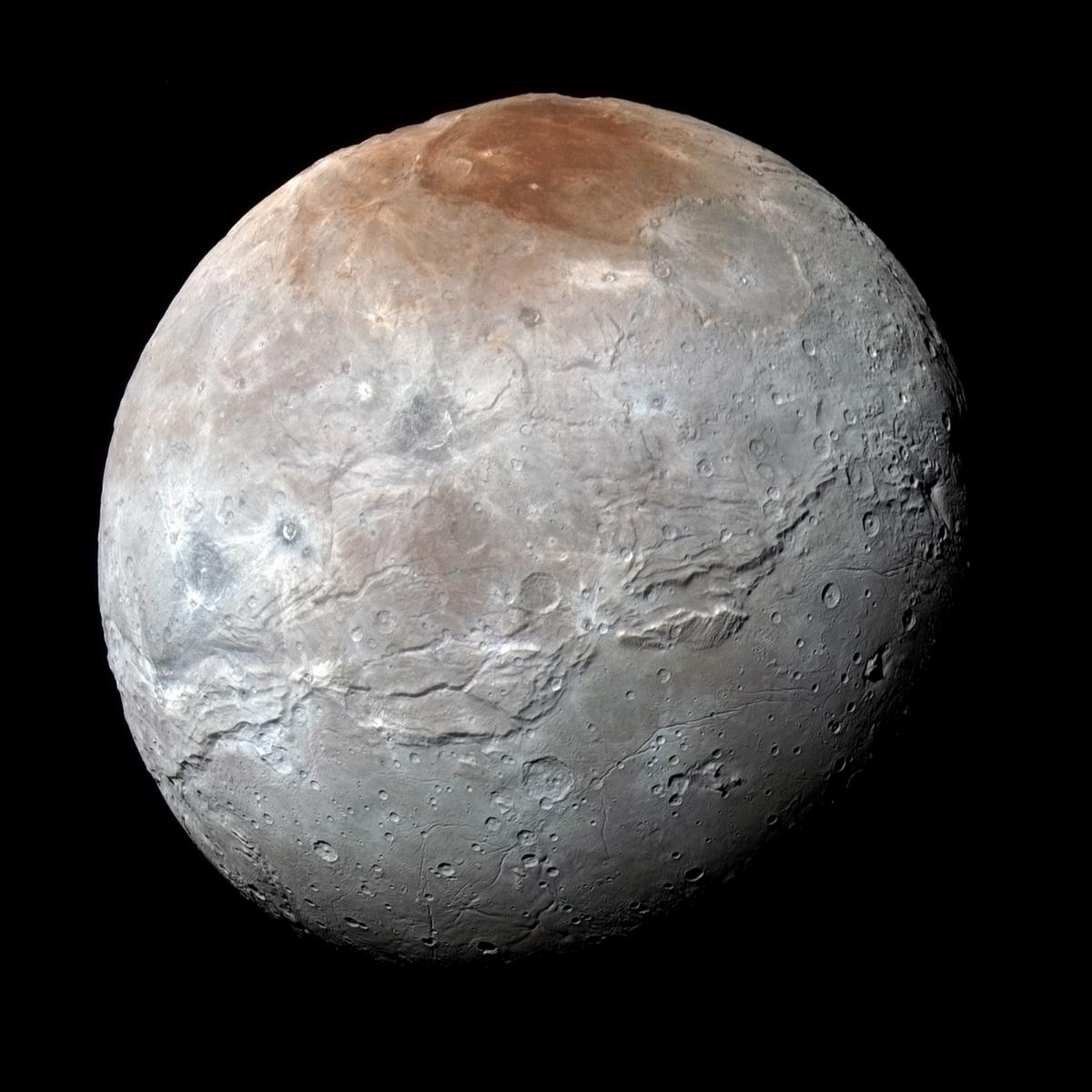 New Horizons view of CharonAstronomers have detected frozen water on the surface of Charon, which is different from the composition of Pluto. That suggests that Charon formed from the debris from a collision between Pluto and another large body, which may be the same process that gave birth to Earth's moon.
New Horizons view of CharonAstronomers have detected frozen water on the surface of Charon, which is different from the composition of Pluto. That suggests that Charon formed from the debris from a collision between Pluto and another large body, which may be the same process that gave birth to Earth's moon.
Exploration
New Horizons
NASA's New Horizons mission became the first spacecraft to visit Pluto when it skimmed past the dwarf planet on July 14, 2015. The craft photographed Pluto and its five known moons, measured the surface composition of Pluto and Charon, and made many other observations.
Teacher Copies
Request a free copy of The Solar System or Beyond the Solar System for your classroom. Bulk copies are available for $1.50 each in quantities of 30 or more. Shipping is included. Call 512-471-5285 for orders of 30 or more.
 The Astro Guides for the Solar System and Beyond the Solar System are supported by the National Aeronautics and Space Administration under Grant Nos. NNG04G131G and NAG5-13147, respectively.
The Astro Guides for the Solar System and Beyond the Solar System are supported by the National Aeronautics and Space Administration under Grant Nos. NNG04G131G and NAG5-13147, respectively.




